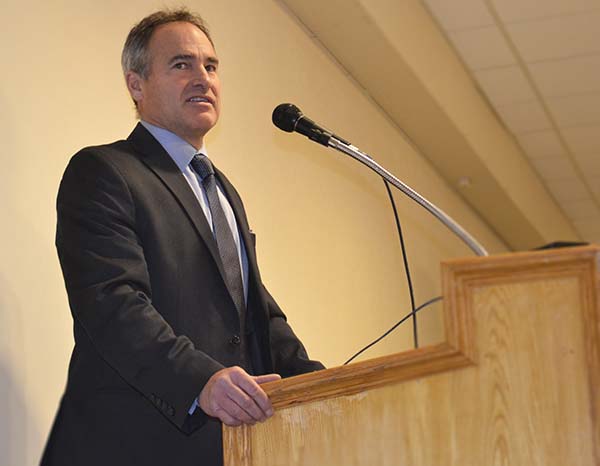
Jayda Noyes, Daily Herald
A Saskatoon surgeon is speaking out about cancers produced by human papillomavirus (HPV).
Dr. Peter Spafford is the head of Otolaryngology – Head and Neck Surgery at the Royal University Hospital.
He was the guest speaker at this year’s Lunch with Friends in Prince Albert, which is hosted by the Canadian Cancer Society (CCS).
According to CCS, HPV can cause six types of cancer: mouth and throat, vaginal, anal, colorectal, vulvar and penile.
“We have discovered, and it’s only been recent, that there’s an epidemic of throat cancer caused by HPV in men,” he said.
Between 1992 and 2012, throat cancer caused by HPV increased by 56 per cent in men and 17 per cent in women.
“It’s now more common to have an HPV-induced cancer than a smoking-induced cancer,” he emphasized.
However, there is a preventative measure for this silent killer.
HPV transmitted through sexual contact
“Human papillomavirus is actually a sexually transmitted disease (STD), and that means that there’s not a lot of public forms talking about it because no one wants to talk about (an STD)” said Spafford. “This is why it’s a touchy subject.”
Because it’s transmitted by bodily fluids, it can be exchanged through both intercourse and non-intercourse sexual contact, like “heavy kissing.”
He noted it can’t be transmitted by objects because viruses don’t sit well on them–examples are urine in public bathrooms and saliva on toys at a daycare.
Additionally, he said HPV can’t be detected in blood.
Province funds vaccine for school-aged children
Unlike most cancers, those caused by HPV are preventable with a vaccine.
The province has recently made it free for all grade six students in Saskatchewan schools, but Spafford said it’s available for children as young as 9-years-old.
He recommends kids get the vaccine at that age because studies show it’s most beneficial about two years before being exposed to HPV.
“I was on a campaign in my capacity as the president of the Canadian Society of Otolaryngology surgery to get the governments to fund widespread vaccination of school-aged boys,” he said. “Embarrassingly so, I’m from Saskatchewan, we were one of the last provinces to adopt it.”
The provincial government has dedicated $750,000 to the vaccine.
‘The vaccine of the century’
Spafford said traditionally, most of his patients with head and neck cancer were heavy smokers and between the ages of 60 and 80.
“About 10 or 15 years ago, I would have patients walk in my office who had tongue cancer or more so throat cancer…They were 40; they were 50, and they never smoked,” he said.
HPV generally won’t appear as cancer until 20 or 30 years after being exposed to it.
“In medical school, they get worried about catching things themselves or getting diseases because they read about it, and I’d always say to my medical students and I say to my patients ‘If you don’t smoke, you can’t get throat cancer.’ I can’t say that anymore,” said Spafford.
“Believe it or not, the number one contagious disease and vaccine in the next century will be HPV.”

